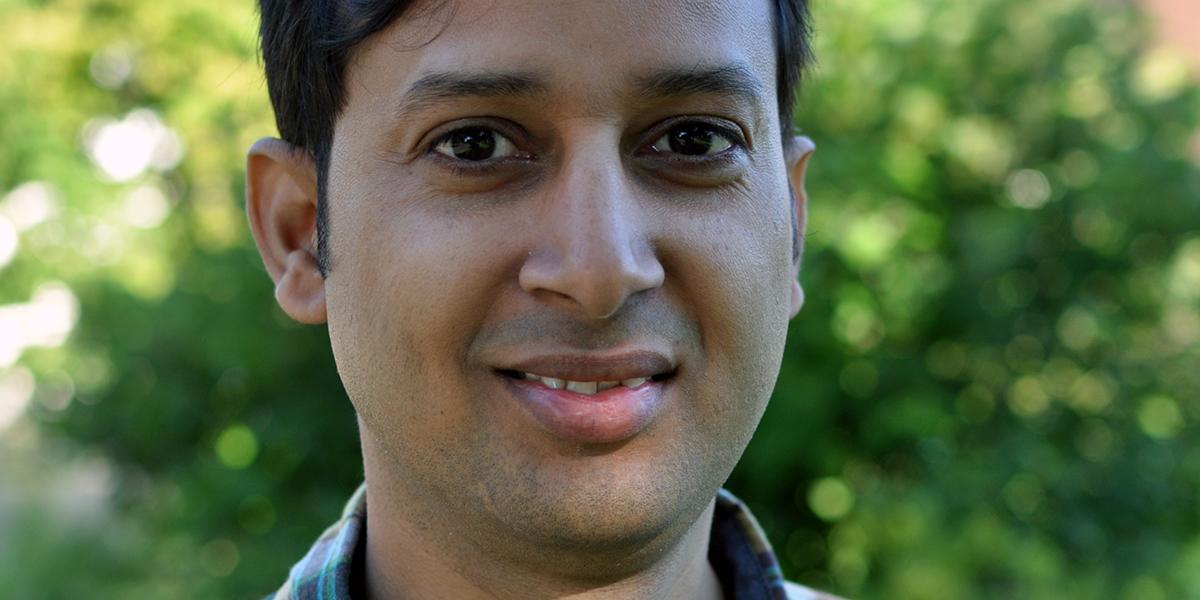Creating a vaccine for viral variants
CVM graduate student explores solution for preventing reovirus infection in turkeys

CVM graduate student explores solution for preventing reovirus infection in turkeys
Minnesota producers raise more turkeys than any other state––around 45 million birds every year. But in 2019, pathologists noticed a spike in the number of turkeys dying from viruses that attack when the birds are young.
There are many types of reoviruses, and the ones that cause viral arthritis infect turkeys and chickens within the first two to four weeks of life. After that, their immune systems can fight the virus off. However, it’s impossible to tell whether or not a youngster has been infected until they’ve reached adulthood.
“The effects don’t show up until it’s too late,” says Rahul Kumar, a third-year PhD candidate in the College of Veterinary Medicine (CVM).
When the disease takes over, a mature bird’s legs become lame, keeping it from being able to reach food and water. “Having an effective way to prevent the disease is important from an economic standpoint, but also for the animals’ well being,” says Sagar Goyal, PhD, a professor in the Department of Veterinary Population Medicine (VPM), whose team is overseeing arthritis reovirus vaccine research at the University of Minnesota.
There is no commercial vaccine against turkey reoviruses, but roughly four decades ago, pathologists were able to develop a vaccine that protects chickens from viral arthritis. However, within the past 10 years, the vaccines started showing dwindling effects. The main reason is that arthritis reoviruses are evolving, and these variants are evading vaccines.
With funding and support from the MnDRIVE Global Food Ventures Research Fellowship program, Kumar set out to identify which emerging reovirus variants are having the biggest impact on poultry and to create new, adaptable vaccines that can target the shifting virus in both chickens and turkeys.
“Most current vaccines use a wild strain of the reovirus that’s prevalent in a flock, but that doesn’t address the problem of variants,” Kumar explains, referring to the auto genius vaccines currently used. This vaccine design can also be risky, since the wild strain can revert back to a pathogenic version of the virus, infecting a flock and creating new opportunities for variants to emerge. Research and development also take time.
“It takes two to three years to develop an autogenous vaccine and by the time the vaccine is ready, a new variant may pop up in the flock,” Kumar says.
Instead, Kumar is taking a new approach. He’s adapting an unrelated virus called the Pichinde virus, which does not cause disease in poultry, to stimulate young birds’ immune systems. To start, the MnDRIVE fellow sequenced reoviruses from Israel, Georgia, Germany, and the U.S. and identified which segments of the reoviral genome differed from those used by current vaccines.
His team then inserted two prominent genes from these variants reoviruses into a live Pichinde virus to formulate vaccines. Birds produced antibodies when vaccinated with these vaccines, a hopeful sign that the shots would protect chicks and poults from disease.
Another crucial aspect of developing a successful vaccine is determining when to administer the vaccine. Kumar discovered that while chickens only need to be protected for the first two weeks of life, turkeys are susceptible for the first four weeks of life.
Next, Kumar and Goyal’s team will test the vaccines in hens to determine whether or not the mothers pass immunity to their young, and if so, whether or not this immunity lasts for the full two weeks in chickens and four weeks for turkeys.
Finally, Kumar will focus on adaptability.
“We already know which genes are immunogenic, so as new variants emerge, we can use whole-genome sequencing to characterize these genes,” Kumar says. “Then we can insert them into an updated vaccine that can be developed quickly in response to new pathogens."